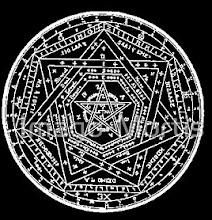Domingo das línguas de fogo
Feast of the Coronation of the Emperor of the Holy Spirit
This description of a unique Portuguese feast, related to the Order of Christ, seems to me to be resonant of ancient mysteries and inner workings. The description was extracted and condensed by a friend from "Do Imperio do Espirito Santo ao Imperio da Filosofia" by Antonio Quadros, pp 326 - 339, in Memorias das Origens, Saudades do Futuro:
It is a "unique" Feast created by the Portuguese, for Portuguese citizens only or those of Portuguese speaking countries or communities, to experience as a Pentecostal act.
Probably dates back to the early 14th century by way of Dom Dinis, Isabel his Queen, the Franciscans of the Convent of Alenquer (note: Queen Isabel purportedly had a prophetic dream in which she saw the plans for the (future) Church of the Holy Spirit in Alenquer and immediately sent word to the "judges" of that town and ordered them to send four masons and six workers to begin construction of the foundations on that site...), intimately tied to the Order of Christ who took it on its voyages of discovery and settlement to Madeira, the Azores and elsewhere. The Feast is however circumscribed to those places where Portuguese is spoken, in Brazil, in the Azorean immigrant communities in the USA, and here and there in (continental) Portugal, namely Penedo and Tomar. It is strongest however on all the islands of the Azores where it has deep roots.
The feast joins the sacred and the profane in a grassroots and spontaneous fashion, and to which, in older times, royalty, the aristocracy and the knights also joined in a display of universal brotherhood...
...the symbolic tongues of fire of the Divine Paraclete, all bear witness to a grand universal project...
What this feast does on an annual basis is to ritualize the prophecy of the future Empire of the Holy Spirit or the Spirit of Truth, which is called ruah by the Jews; pneuma by the Greeks and spiritus by the Latins...
The Feast of the Coronation of the Emperor of the Holy Spirit symbolizes also another prophecy: not only peace on earth and good will among men, but also the reconciliation among the three great religions of the Book, perhaps among all the religions of the world through the means of the symbolism of the hovering dove, the tongues of fire and the Spirit of Truth...

Mas tal projecto só seria verdadeiramente viável através de uma teoria laicista, qual a preconizada por um Dante, que, sob o domínio carismático de um Imperador directamente ungido e coroado por Deus-Espírito, pudesse esbater o poder radicalista das ortodoxias religiosas. Se todo o domínio espiritual fosse destas, o diálogo tornar-se-ia impossível devido ao rigorismo teológico dos eclesiásticos.
Mas se, mesmo com o predomínio religioso do Cristianismo, o acento recaísse sobre o Espírito Santo, sobre a Terceira Pessoa, sobre o Quinto Evangelho ou sobre o Evangelho Eterno, quiçá fosse possível aceder à concepção de um
Deus
Homem de outro Deus maior
, no verso de Pessoa, de um Deus-Espírito no qual coubessem o Deus trinitário do Cristianismo e ainda Jeová e Alah, e mesmo o Deus Desconhecido ou aqueles Deuses únicos e recônditos cujo Mistério subjaz a todos os Politeísmos.
Como aboná-lo?
Talvez começando por recordar a tolerância religiosa vigente em terra portuguesa até que a Contra-Reforma entre nós penetrasse ; a liberdade de que gozaram islamitas e judeus...










